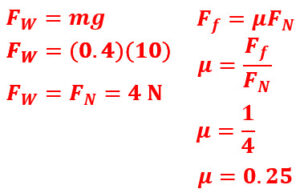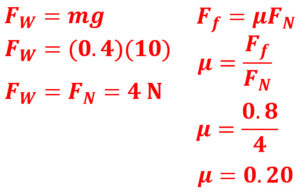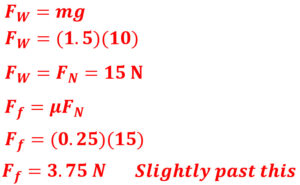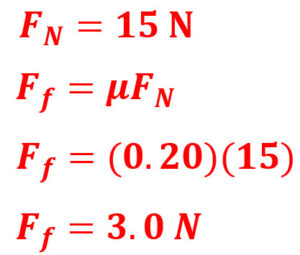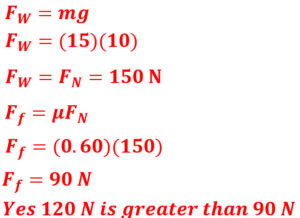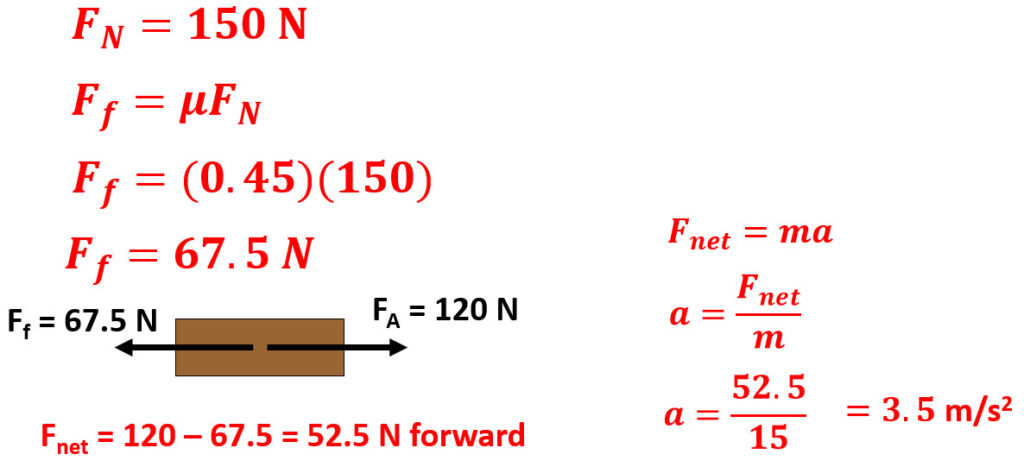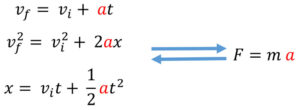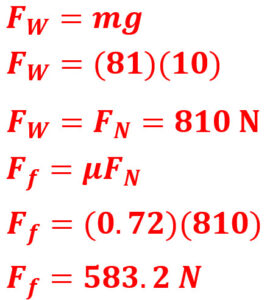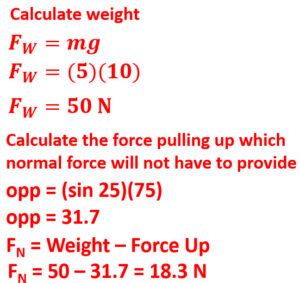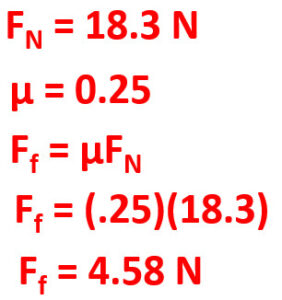Frictional Force (Friction)
Learn about the force of friction and how to solve problems that involve friction or the coefficient of friction.
Friction Learning Targets
- I know the difference between static, kinetic sliding, and kinetic rolling friction
- I can solve for the force of friction
- I can solve for the coefficient of friction
- I can determine net force and acceleration
- I can use the overall net force to determine other variables in the acceleration equations
Friction force (Ff)
- Force created when surfaces rub against each other
- Reason: surfaces are rough at the microscopic level
- Created in the opposite direction of motion
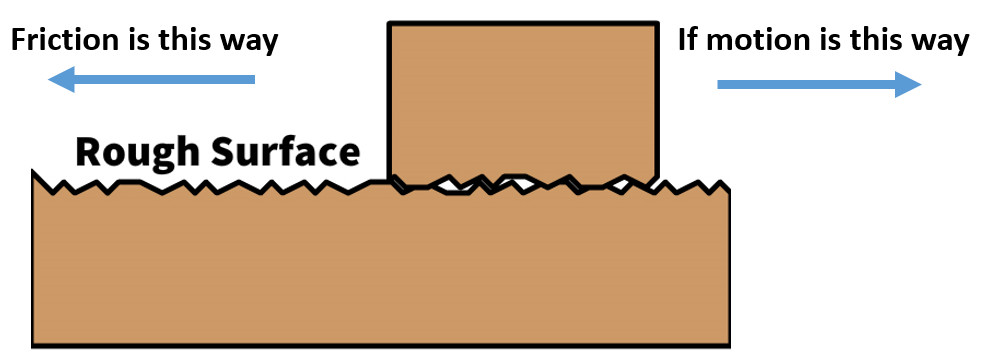
Types of Friction
Static Friction: frictional force caused by an applied force at rest (before motion).
Kinetic Sliding Friction: frictional force when an object is sliding in motion
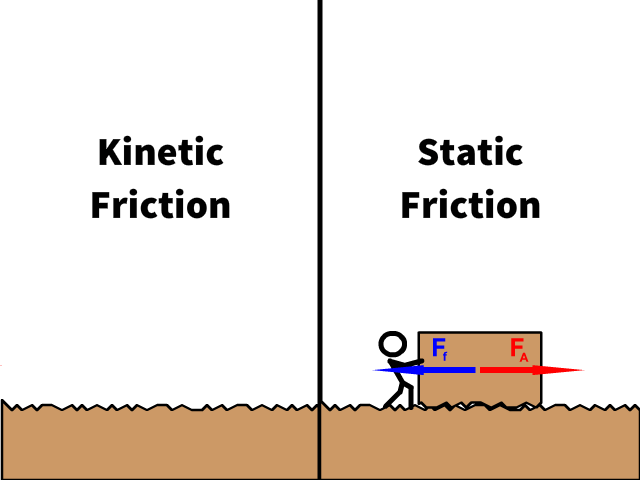

Kinetic Rolling Friction: frictional force when an object is rubbing surfaces while rotating
From here, we will call kinetic sliding friction just kinetic friction and kinetic rolling friction just rolling friction.
- Until motion, surfaces have static friction
- Once moving, surfaces have kinetic friction
- The type of kinetic friction depends on if the object is sliding or rolling
Kinetic friction is less than static friction
- A General Rule: Kinetic (sliding) friction is less than static (not moving) friction
- Because moving surfaces are bouncing off each other with little less surface area interaction
- Rolling Friction would have less friction (opposing force) than static or kinetic sliding friction
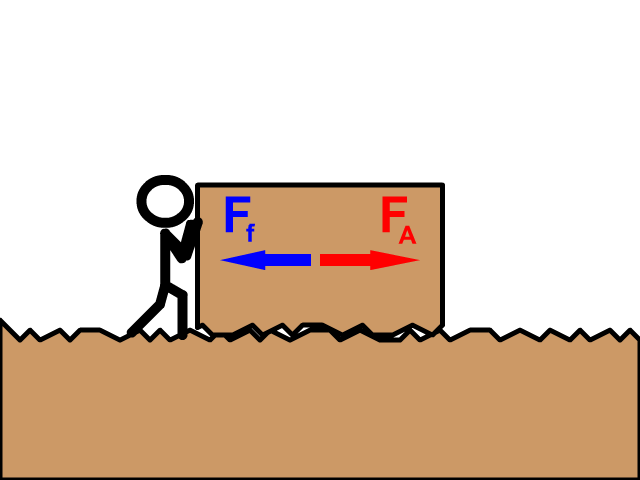
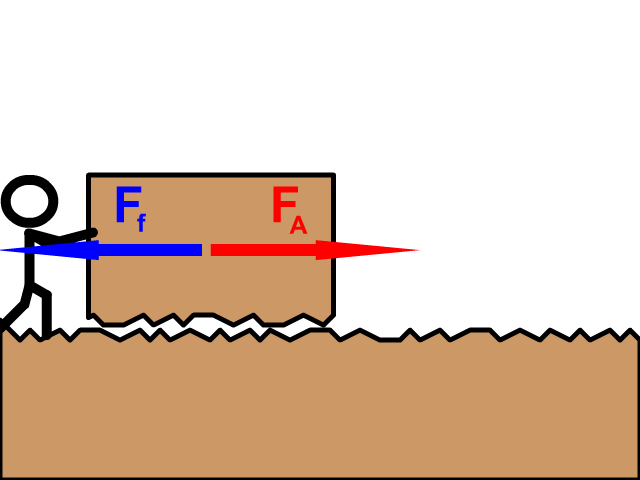
Q1: What time of friction do you have when an object is not yet moving?
Q2: Place the following in order from greatest possible force of friction to least
(Rolling Friction, Static Friction, Kinetic Friction)
Frictional Force Equation
Ff : Force of friction (N)
- Force opposing motion due to rough surfaces
μ : Coefficient of friction (no unit)
- Number that relates the amount of friction to normal force. The coefficient of friction (μ) will change depending on the surfaces in contact
FN : Normal Force (N)
- Force of the ground pushing against weight (perpendicular to the surface)
On a horizontal surface, the magnitude of normal force equals weight
- Weight (FW) in Newtons equals to the magnitude of normal force (FN)
- If given mass (m) in kilograms, solve for weight (Fw = mg) with g = 10 m/s2 to determine the magnitude of normal force (FN)
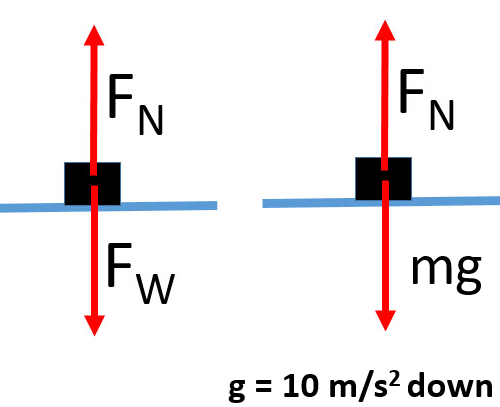
Different Coefficient of Friction (µ) Variables
- µs represents the coefficient of static friction
- µk represents the coefficient of kinetic sliding friction
- µr represents the coefficient of kinetic rolling friction (wheel rolling)
Engineers will use tables to determine material to use in equipment depending on it's purpose and intention to stick, slide, or roll.

More Facts About Coefficient of Friction (µ)
- Surfaces have different roughness and therefore oppose motion at different rates
- The bigger the coefficient of friction (µ) the more friction or resistance to motion
- When the same surfaces are in contact, coefficient of kinetic friction (µk) is almost always less than the coefficient of static friction (µs)
- It’s harder to get an object moving than keep it moving
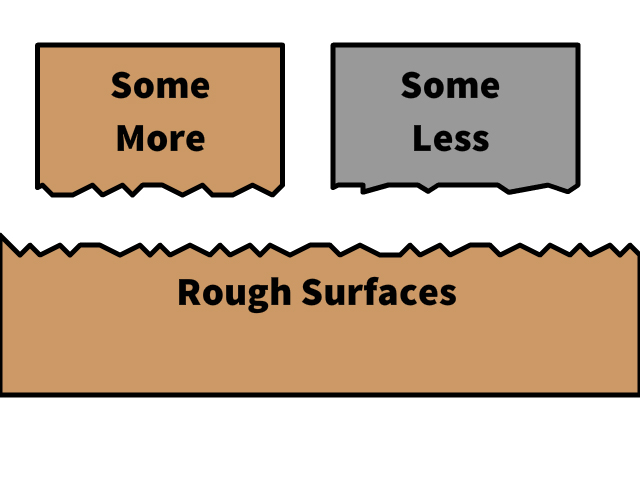
Q3: Which coefficient of friction would have the greatest resulting force of friction?
µ1 = 0.8 µ2 = 0.2 µ3 = 0.5
Calculating the force of static friction
- Any force applied before motion equals the magnitude of static friction
- No motion means you have static equilibrium
- Net force equals 0
- Because: FA = -Ff
Notice in the animation that the force of static friction increases until there is motion
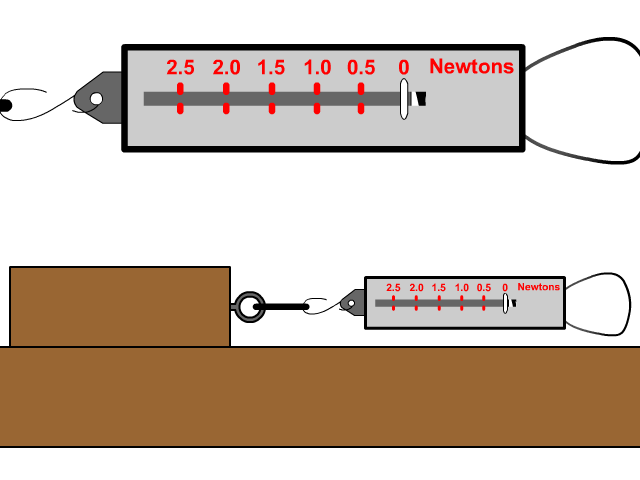
Q4: What is the force of static friction when 3.5 N of force is applied horizontally and the object is not moving?
Calculating coefficient of static friction
- Measure the maximum force of static friction (equal to the force applied necessary to first move the block)
- You use this maximum static friction (Ff) to solve for the coefficient of static friction (µs)



Notice in the animation that the spring scale gets to 1.0 N before the block moves and force decreases. Therefore, the maximum force while still static (not moving) is 1.0 N.
Q5: A 0.4 kg block is sitting on a surface. What is the coefficient of static friction between the block and surface when it takes 1.0 N of force before the block begins to move?
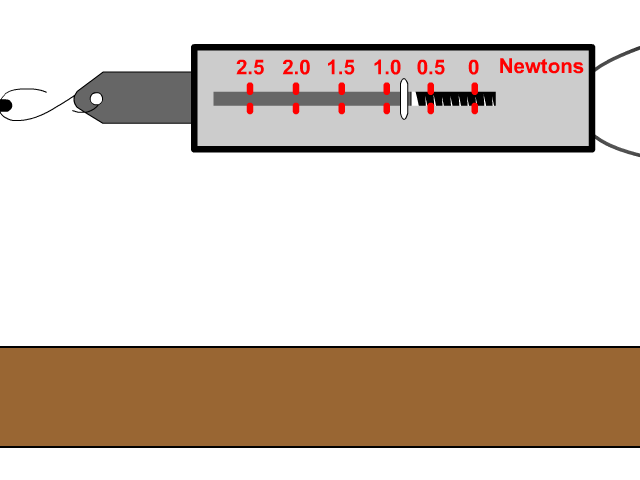


Q6: What is the force of kinetic friction when 1.3 N of force is applied horizontally to keep the object moving at a constant velocity?
Calculating coefficient of kinetic friction in a lab setting
- Measure the force required to keep the block moving at a constant velocity
- This will be the equal to the frictional force (Ff) you use to determine the coefficient of kinetic friction (µk)



Q7: A 0.4 kg block on a horizontal surface. What is the coefficient of kinetic friction between the block and surface when it takes 0.9 N of force to keep the block moving at a constant velocity?
(Q8-Q11) It takes 45 N of force horizontally to move a wood block with a constant velocity across a desk.
Q8: What is the applied force?
Q9: What is the force of friction?
Q10: What is the net force?
Q11: What is the acceleration?
Non-zero net force causes acceleration
- When the force applied is greater than the force of static friction, you have a net force and acceleration
Fnet = ma
Q12: What minimum force do you have to apply horizontally to get a 1.5 kg block of wood at rest to move on a wood surface?
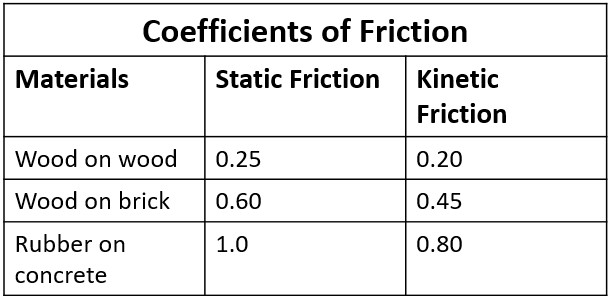

Q13: How much force would it take to keep the 1.5 kg block of wood moving at a constant velocity after its moving?
Q14: Would a 15 kg brick at rest on a wood floor accelerate when 120N of horizontal force is applied?
Q15: What would a 15 kg brick on a wood floor accelerate at when 120N of horizontal force is applied?
Q16: An 81 kg person runs and slides. The coefficient of kinetic friction between the person and ground is 0.72. What is the magnitude of frictional force?
Q17: An 81 kg person runs and slides. The coefficient of kinetic friction between the person and ground is 0.72. What was the person’s initial speed if it took 2.0 seconds to come to rest?
When a force is at an angle to the horizontal plane, the block will move on:
- The opposite side will decrease the normal force of the ground
- The adjacent side is in the direction of motion and will be used to determine the applied force forward
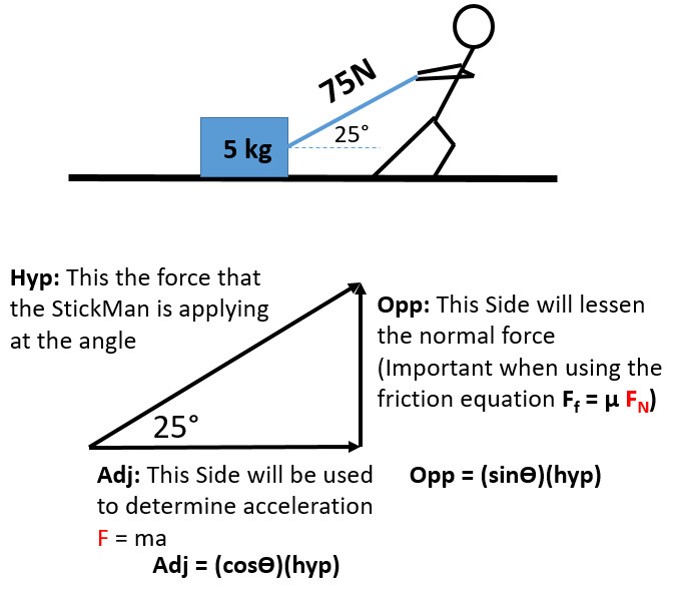

Q18: A 5 kg box is pulled at an angle of 25° from the horizontal with a force of 75 N if the coefficient of kinetic friction is 0.25. What is the normal force?
Q19: A 5 kg box is pulled at an angle of 25° from the horizontal with a force of 75 N if the coefficient of kinetic friction is 0.25. What is the horizontal applied force?
Q20: A 5 kg box is pulled at an angle of 25° from the horizontal with a force of 75 N if the coefficient of kinetic friction is 0.25. What is the force of friction?
Q21: A 5 kg box is pulled at an angle of 25° from the horizontal with a force of 75 N if the coefficient of kinetic friction is 0.25. What is the net force?
Q22: A 5 kg box is pulled at an angle of 25° from the horizontal with a force of 75 N if the coefficient of kinetic friction is 0.25. What is the acceleration of the box?
Q23: If you lift the side of a desk creating an incline until the moment an object first starts moving. What would happen next keeping that exact same angle and why?
A. The block would stop
B. The block would move at a constant rate down the incline
C. The block would accelerate down the incline
Notice how frictional force uphill and parallel force downhill increase with the incline until motion occurs. Because of motion, static friction changes to a lesser kinetic friction. Therefore the force uphill (friction) is less than the force downhill. At that moment the net force is downhill. So the net force downhill creates an acceleration.
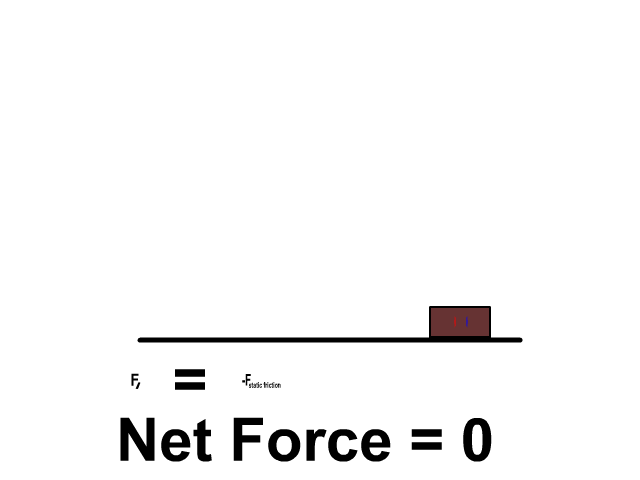

Links
- Continue to the Force of Friction Problem Set
- Continue to Tension Force
- Back to the Main Forces Page
- Back to the Stickman Physics Home Page
- Equation Sheet


